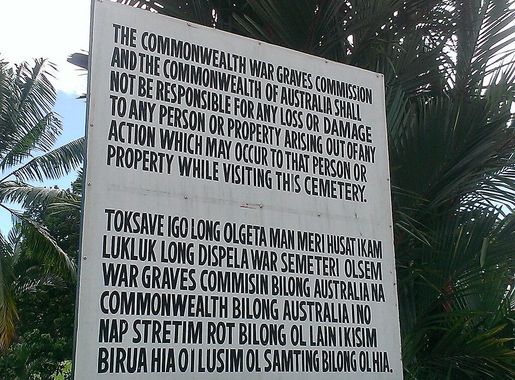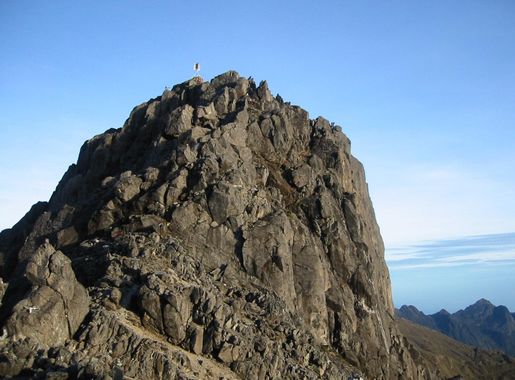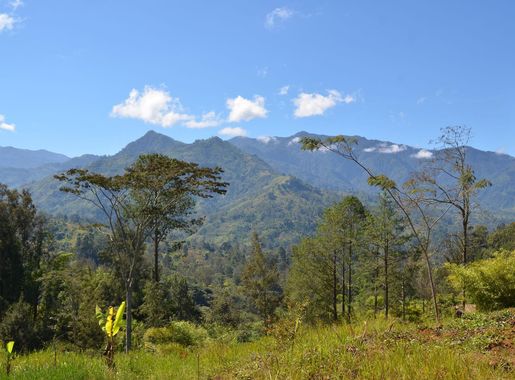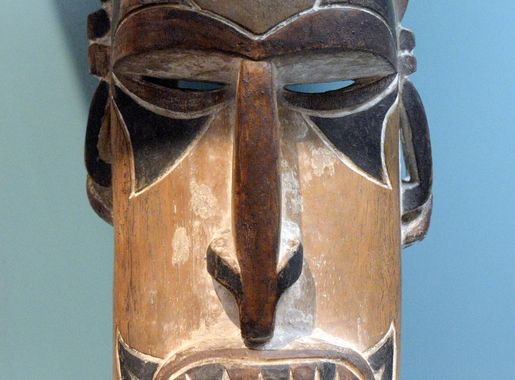
Morobe Province: The Hidden Gem of Papua New Guinea
Discover Morobe Province in Papua New Guinea: A paradise of lush rainforests, pristine beaches, and rich cultural heritage waiting to be explored.
Nestled on the northeastern coast of Papua New Guinea, Morobe Province is a captivating destination known for its diverse landscapes and rich cultural heritage. The province is home to lush rainforests, pristine beaches, and towering mountains, making it a haven for nature enthusiasts and adventure seekers alike. Lae, the capital city, serves as the gateway to the province and offers a mix of urban and natural attractions. The city is famous for the Lae War Cemetery, a poignant reminder of World War II, and the bustling Lae Market, where you can immerse yourself in the local culture and shop for fresh produce and handicrafts. For those looking to explore the great outdoors, Morobe Province does not disappoint. The Huon Peninsula is a must-visit, featuring the stunning fjords of the Huon Gulf and the rugged Saruwaged Range. The province is also home to the pristine Markham Valley, where you can witness traditional village life and enjoy breathtaking views. The province's cultural diversity is equally impressive. With over 100 languages spoken, Morobe is a melting pot of traditions and customs. Visitors have the chance to experience traditional dances, music, and ceremonies, providing a unique insight into the local way of life.
Local tips in Morobe Province
- Visit Lae Market early in the morning for the freshest produce and unique handicrafts.
- Carry local currency, as many places may not accept credit cards.
- Respect local customs and traditions, especially when visiting villages.
- Hire a local guide for trekking in the Saruwaged Range to ensure a safe and informative experience.
- Pack insect repellent and sunscreen, as the tropical climate can be harsh.
Morobe Province: The Hidden Gem of Papua New Guinea
Nestled on the northeastern coast of Papua New Guinea, Morobe Province is a captivating destination known for its diverse landscapes and rich cultural heritage. The province is home to lush rainforests, pristine beaches, and towering mountains, making it a haven for nature enthusiasts and adventure seekers alike. Lae, the capital city, serves as the gateway to the province and offers a mix of urban and natural attractions. The city is famous for the Lae War Cemetery, a poignant reminder of World War II, and the bustling Lae Market, where you can immerse yourself in the local culture and shop for fresh produce and handicrafts. For those looking to explore the great outdoors, Morobe Province does not disappoint. The Huon Peninsula is a must-visit, featuring the stunning fjords of the Huon Gulf and the rugged Saruwaged Range. The province is also home to the pristine Markham Valley, where you can witness traditional village life and enjoy breathtaking views. The province's cultural diversity is equally impressive. With over 100 languages spoken, Morobe is a melting pot of traditions and customs. Visitors have the chance to experience traditional dances, music, and ceremonies, providing a unique insight into the local way of life.
When is the best time to go to Morobe Province?
Iconic landmarks you can’t miss
Lae Nadzab Airport AYNZ
Discover the gateway to Morobe Province at Lae Nadzab Airport, your starting point for adventures in Papua New Guinea's natural beauty and rich culture.
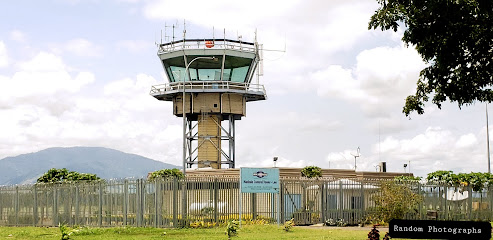
Lae Botanic Gardens
Explore the lush landscapes and exotic flora at Lae Botanic Gardens, a serene haven in the heart of Morobe Province, Papua New Guinea.
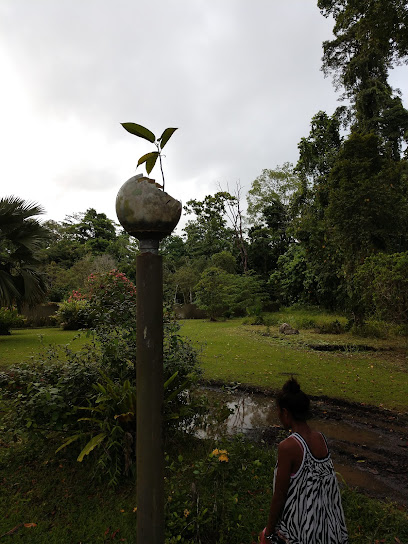
Rainforest Habitat
Discover the lush biodiversity and vibrant wildlife of the Rainforest Habitat in Lae, a must-visit for nature lovers and adventure seekers in Papua New Guinea.
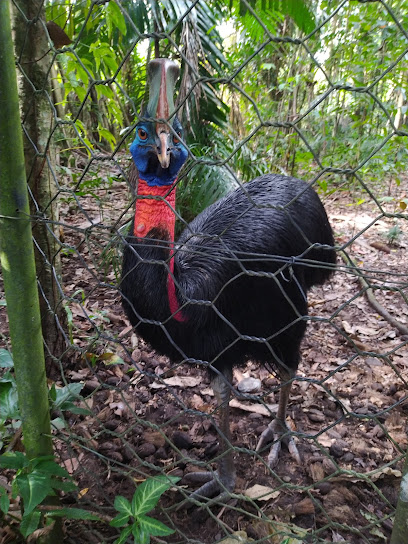
McAdam National Park
Discover the natural beauty and rich biodiversity of McAdam National Park in Papua New Guinea, a paradise for nature lovers and adventure seekers.
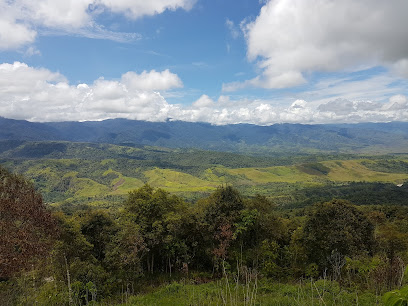
Amelia Earhart Memorial
Explore the Amelia Earhart Memorial in Lae, a serene tribute to the pioneering aviator surrounded by the rich history of aviation.
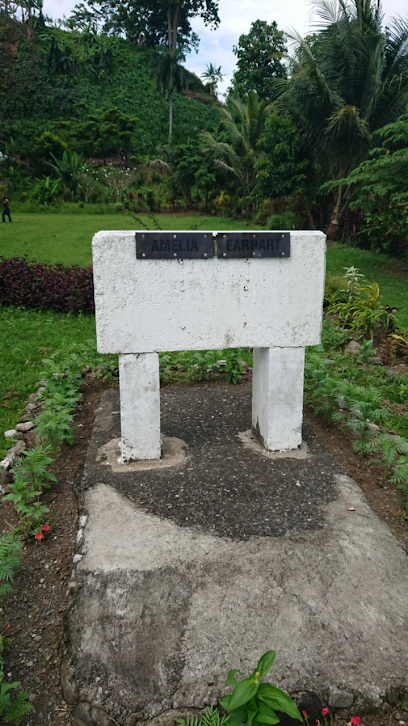
Sipaia
Explore Sipaia in Lae, a beautiful tourist attraction offering nature trails, relaxation spots, and a glimpse into local culture.
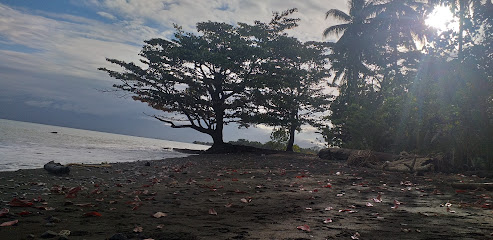
Mt. Shungol
Explore the stunning heights of Mt. Shungol in Morobe Province, Papua New Guinea, a paradise for hikers and nature enthusiasts alike.
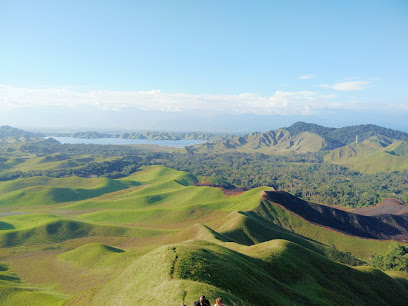
Biawen Wau Papua New Guinea
Explore the rich culture and stunning landscapes of Biawen Wau, a hidden tourist attraction in Papua New Guinea's Morobe Province.
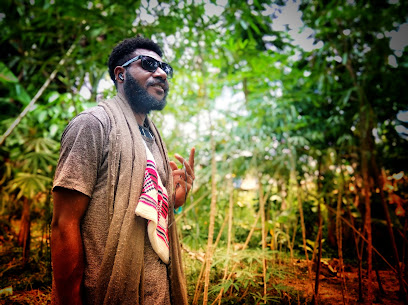
Unmissable attractions to see
Lae Botanic Gardens
Explore the lush landscapes and vibrant flora of Lae Botanic Gardens, a serene retreat in Morobe Province, Papua New Guinea.
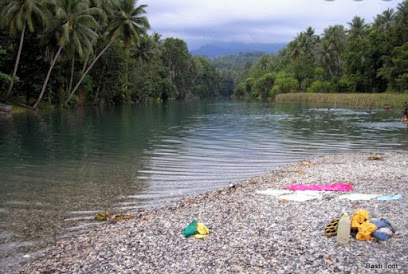
Rainforest Habitat
Discover the breathtaking biodiversity of Rainforest Habitat in Lae, a must-visit park for nature lovers and adventure seekers in Papua New Guinea.
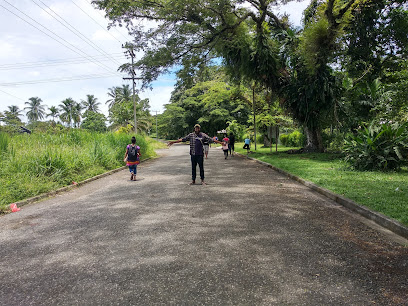
McAdam National Park
Explore the lush landscapes and diverse wildlife of McAdam National Park in Morobe Province, an unforgettable escape into nature's tranquility.

DCA lookout
Discover breathtaking views and serene landscapes at DCA Lookout, the premier park in Lae, Papua New Guinea.
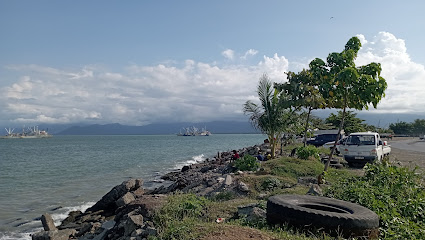
Amelia Earhart Memorial
Discover the inspiring Amelia Earhart Memorial in Lae, a tribute to aviation history and female empowerment set in the lush landscapes of Morobe Province.
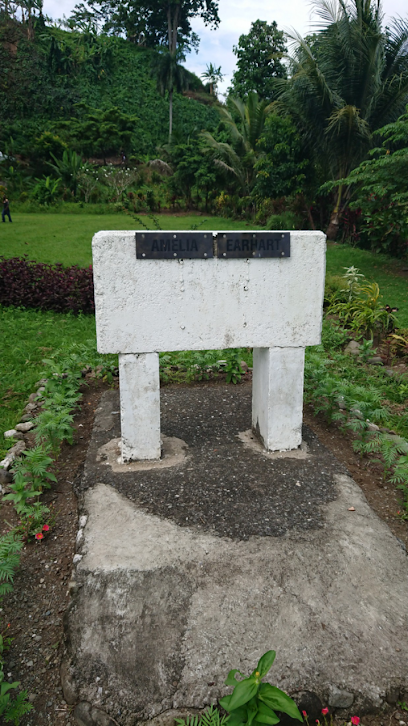
Sipaia
Experience the tranquil beauty of Sipaia in Lae, Papua New Guinea – a perfect retreat for nature lovers and relaxation seekers.
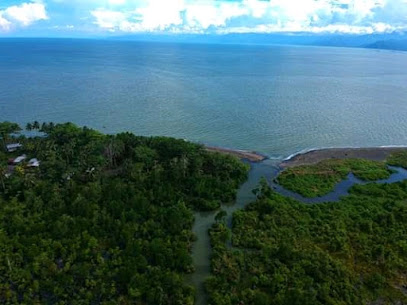
Lae War Cemetery
Explore Lae War Cemetery, a serene memorial honoring fallen soldiers of World War II in Morobe Province, perfect for reflection and historical insight.
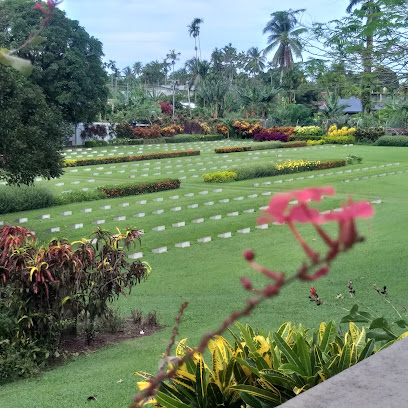
SalaMata Haus (SalaMata Haus&Tours ).
Explore the cultural richness and stunning landscapes of SalaMata Haus in Morobe Province, a true gem for every traveler.
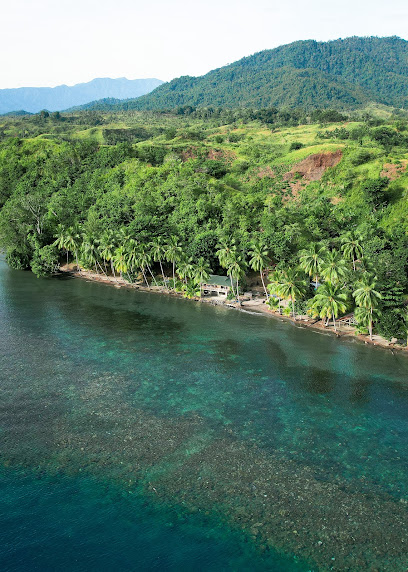
Butaweng Waterfalls
Experience the breathtaking beauty of Butaweng Waterfalls, a hidden gem in Morobe Province, Papua New Guinea.
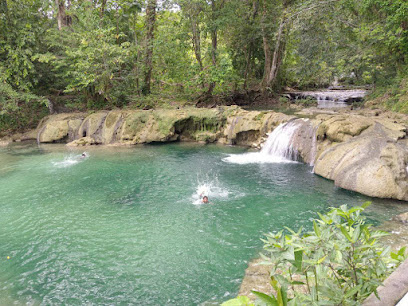
Botanic Park
Explore the lush landscapes of Botanic Park in Lae, a tranquil paradise filled with native flora and serene walking paths for nature lovers.
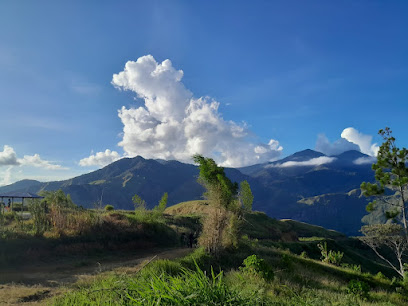
Smoked Mummies Site - Angabena
Explore the enigmatic Smoked Mummies Site in Angabena, a captivating tourist attraction revealing ancient burial practices in Papua New Guinea's stunning landscape.
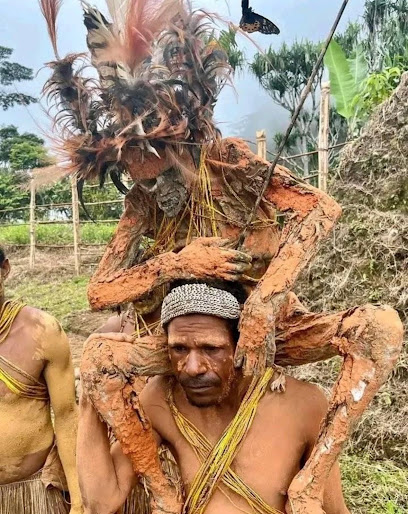
Pelè Waterfalls
Explore the breathtaking Pelè Waterfalls in Papua New Guinea, a stunning natural wonder perfect for hiking and immersing in nature's beauty.
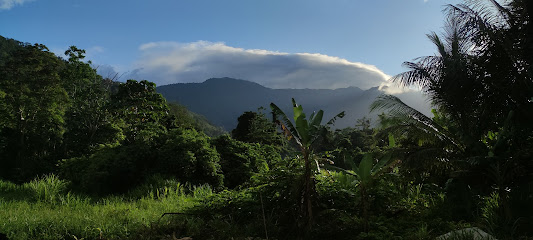
Wampup Erap Station
Explore the stunning natural beauty and vibrant culture of Papua New Guinea at Wampup Erap Station in Morobe Province.

AluWe Estate
Explore the serene beauty and rich culture of AluWe Estate in Morobe Province, a hidden gem of Papua New Guinea, perfect for nature lovers and cultural enthusiasts alike.
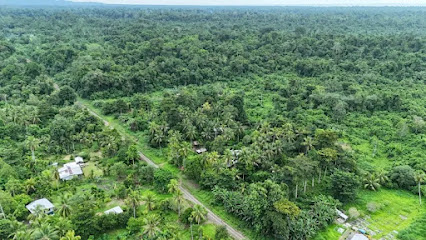
Shernae Recreational Activities
Discover the tranquil beauty of Shernae Recreational Activities in Morobe, where nature meets adventure in an unforgettable preserve.

Essential places to dine
Foodmart
Explore diverse flavors and local produce at Foodmart - your go-to grocery store in Lae's vibrant market scene.
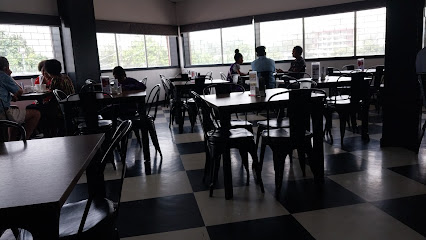
Lae International Hotel
Discover comfort and convenience at Lae International Hotel – your perfect base for exploring Morobe Province's vibrant culture.

Crossroads Hotel
Discover comfort at Crossroads Hotel in Lae – your gateway to Morobe Province's rich culture and stunning landscapes.

Lae Golf Course
Experience golfing like never before at Lae Golf Course—where lush landscapes meet thrilling challenges in Papua New Guinea.
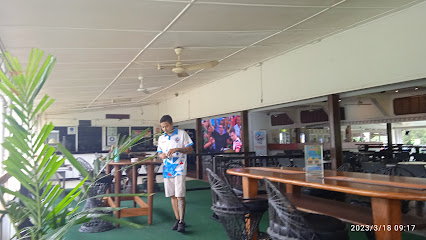
Bungaraya Restaurant
Discover authentic Chinese flavors at Bungaraya Restaurant in Lae - where every meal is a celebration of culinary tradition.
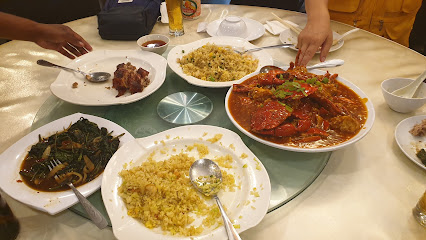
Hotel Morobe
Discover Lae's hospitality at Hotel Morobe - where comfort meets culture in the heart of Papua New Guinea.

Wickid Chicken
Experience the vibrant flavors of Wickid Chicken in Lae – where every bite takes you on a culinary adventure!

Vanda Restaurant
Experience authentic Papua New Guinean cuisine at Vanda Restaurant in Lae – where every meal tells a story.
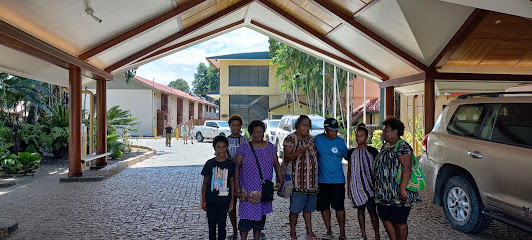
Big Rooster
Discover Big Rooster in Lae: A Fast Food Gem Serving Delicious Local Flavors and Classic Favorites in Morobe Province.
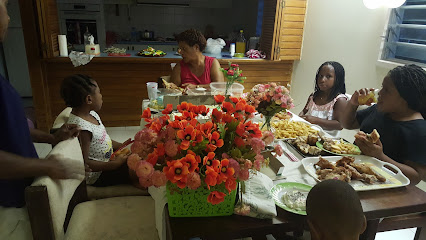
Ocean Restaurant
Discover the culinary delights of Asian cuisine at Ocean Restaurant in Lae, where fresh ingredients meet authentic flavors.
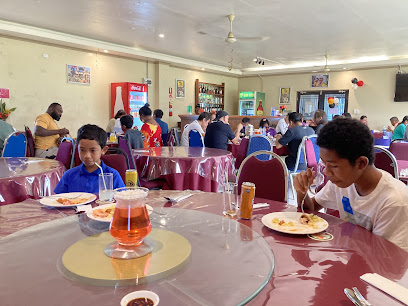
Luluai's Italian Restaurant
Experience authentic Italian cuisine at Luluai's Italian Restaurant in Lae—where every meal is a celebration of flavor and warmth.
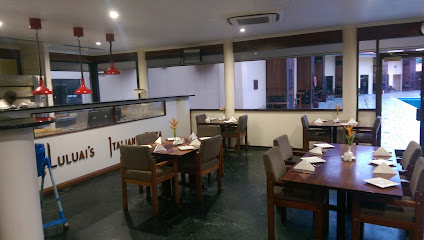
Paradise Grill
Experience authentic Papua New Guinean flavors at Paradise Grill in Ukarumpa - where every meal tells a story.
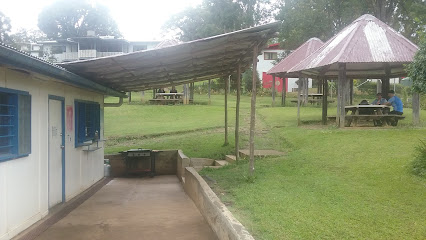
Lae Garden Restaurant
Experience authentic Papua New Guinean cuisine amidst stunning gardens at Lae Garden Restaurant in Morobe Province.

Zaffaran
Experience authentic Indian cuisine at Zaffaran in Lae - where rich flavors meet warm hospitality.
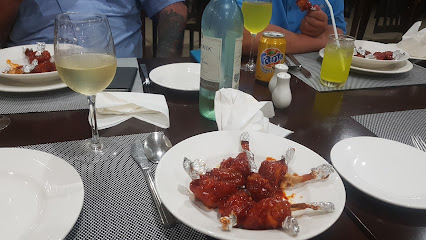
Fil Lae Food Hub
Experience authentic Papua New Guinean cuisine at Fil Lae Food Hub – where every dish tells a story!
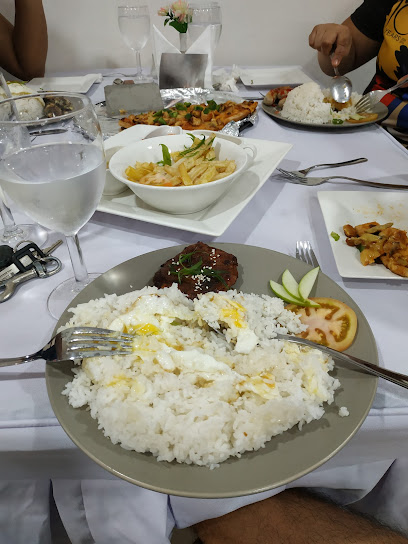
Markets, malls and hidden boutiques
Jacks of PNG (Lae Branch)
Discover unique clothing at Jacks of PNG in Lae, where local fashion meets contemporary style, offering a vibrant shopping experience for every traveler.

Seeto KUI VARIETY STORE
Discover the vibrant atmosphere of Seeto KUI VARIETY STORE in Lae, where local flavors and essential groceries meet for an unforgettable shopping experience.
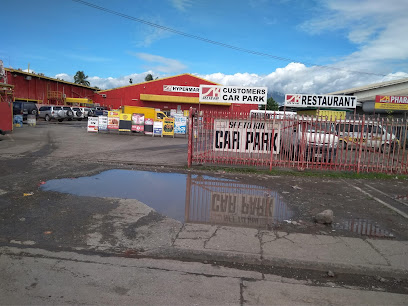
Kopiri Haus
Discover trendy women's clothing at Kopiri Haus in Lae, where style meets local culture in a vibrant shopping experience.
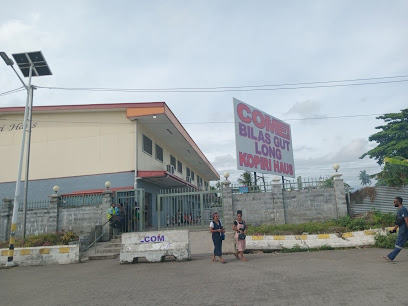
Laurabada Second Hand Store
Explore sustainable fashion at Laurabada Second Hand Store in Lae, where every piece has a story and contributes to eco-friendly shopping.
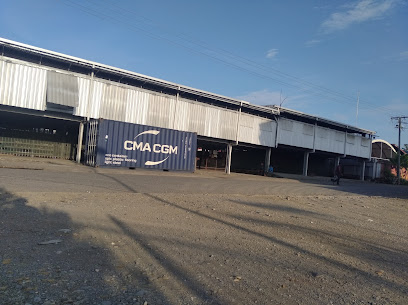
Morobe Creative Merchandising
Explore Morobe Creative Merchandising for authentic local crafts and unique souvenirs that celebrate the vibrant culture of Papua New Guinea.

store
Discover the charm of Lae's bakery, where local flavors and fresh pastries create a memorable culinary experience for every traveler.

LAS KONA TRADING
Explore the heart of Lae at Las Kona Trading, your go-to general store for local products and essential goods in Papua New Guinea.

Jonathan's Store
Explore Jonathan's Store in Mumeng for a unique shopping experience filled with local culture and delightful finds in Morobe Province.
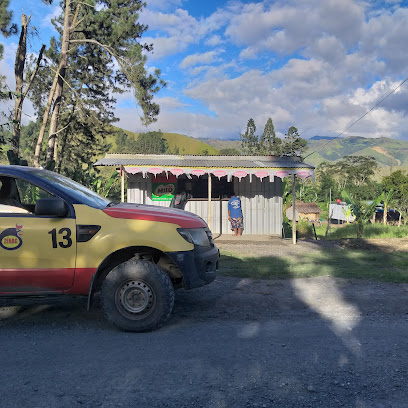
KUPA Trading
Discover KUPA Trading in Lae for a unique shopping experience, offering a diverse range of home goods and local craftsmanship.

LAE MARKET KLOS, 10,000 ITEMS A DAY
Explore LAE Market Klos for a vibrant shopping experience, showcasing 10,000 items of local fashion and unique souvenirs in Lae, Morobe Province.
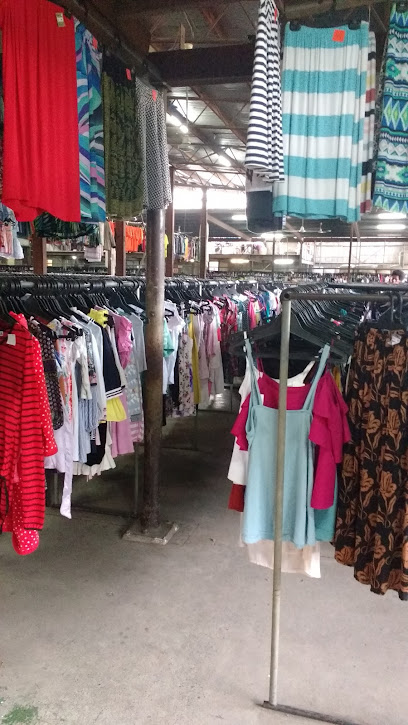
COSTCO TRADING LTD
Experience the best of Lae shopping at Costco Trading Ltd, your one-stop department store for quality goods at great prices.

Union Shop
Explore the Union Shop in Lae for a taste of authentic Papua New Guinean culture and unique local crafts.

Home of PNG Mission Kolos
Explore the vibrant cultural tapestry of Papua New Guinea through unique clothing at Home of PNG Mission Kolos in Lae.

TopTown Clothing
Explore sustainable fashion at TopTown Clothing in Lae, where each pre-loved piece has a story waiting to be discovered.

Top Town Clothing
Explore unique fashion finds at Top Town Clothing, a must-visit thrift store in Lae, Morobe Province, for sustainable and stylish shopping.

Essential bars & hidden hideouts
Ocean Restaurant
Discover the flavors of Asia at Ocean Restaurant in Lae, where fresh ingredients and warm hospitality create an unforgettable dining experience.
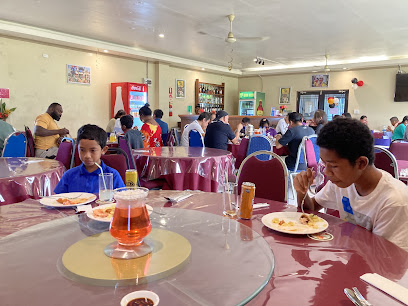
Ramu Management Club
Discover the vibrant atmosphere of Ramu Management Club, Kaigulan's premier bar for drinks, relaxation, and local culture.

Simpol Trading
Discover the vibrant atmosphere of Simpol Trading, the perfect bar in Eastern Highlands for relaxation and local flavors.
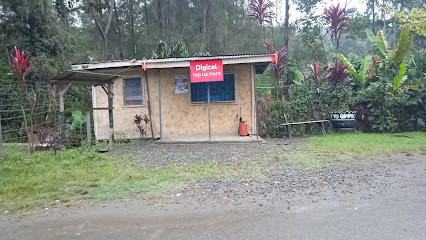
Yumi Bar
Experience the vibrant nightlife of Lae at Yumi Bar, where local culture meets refreshing drinks in a lively atmosphere.
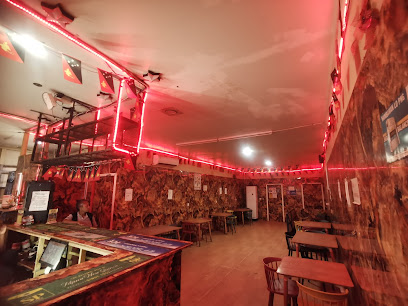
Pikus Tavern
Experience the vibrant atmosphere of Pikus Tavern in Lae, where delicious local cuisine and refreshing drinks await in a lively setting.

Dragons Entertainmennt Venue
Discover the lively atmosphere of Dragons Entertainment Venue, a top bar in Lae, Morobe Province, perfect for unwinding with local drinks and friendly company.

Yonga Trading
Discover Yonga Trading, Gagidu's vibrant beer garden, where local brews meet a relaxed atmosphere in the heart of Morobe Province.
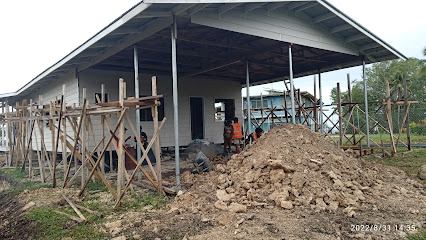
White Dudes Bar & Grill
Taste the vibrant local cuisine at White Dudes Bar & Grill, a lively dining experience in Morobe Province, Papua New Guinea.
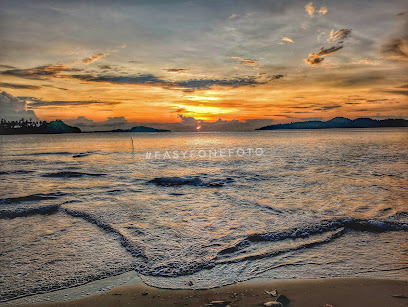
The Beer Garden
The Beer Garden in Lae: A lively bar offering a diverse selection of local and international beers in a friendly atmosphere.
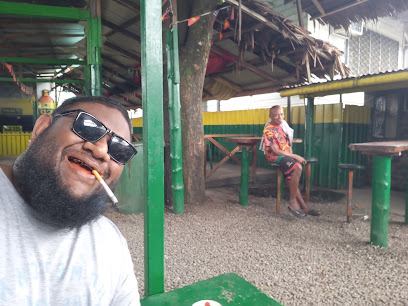
Latep Junction
Discover the vibrant atmosphere and local culture at Latep Junction, the perfect bar in Malangata for relaxation and entertainment.

Kumoks Bottle Shop
Discover the local flavors and vibrant atmosphere at Kumoks Bottle Shop, a top bar in Lae, Morobe Province.

Sportsman Bar
Discover the vibrant atmosphere of Sportsman Bar in Lae, where locals and tourists gather for drinks, music, and authentic Papua New Guinea culture.

Malbanga Liquor store
Experience the vibrant local culture at Malbanga Liquor Store in Lae, where drinks and conversations flow in a relaxed atmosphere.
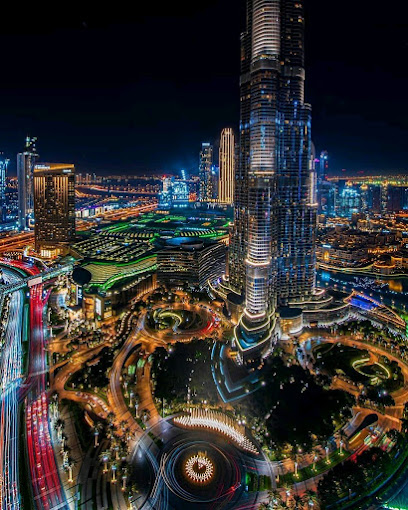
Wima Trading
Experience the vibrant local culture at Wima Trading, a cozy bar in Bumayong offering refreshing drinks and a friendly atmosphere.

Playground Bar, Lae
Experience the lively atmosphere and local culture at Playground Bar in Lae, Morobe Province, for an unforgettable night out.

Local Phrases about Morobe Province
-
- HelloGutpela dei
[Goot-peh-lah day] - GoodbyeGutbai
[Goot-bye] - YesYah
[Yah] - NoNogut
[No-goot] - Please/You're welcomePlis
[Plis] - Thank youTangkyu
[Tahng-kyoo] - Excuse me/SorrySori
[Soh-ree] - How are you?Yu stap gutpela?
[You stahp goot-peh-lah?] - Fine. And you?Mi stap gutpela. Na yu?
[Mee stahp goot-peh-lah. Nah yoo?] - Do you speak English?Yu save toktok long Inglish?
[You sah-veh tohk-tohk long Ing-glish?] - I don't understandMi no save long dispela
[Mee no sah-veh long dees-peh-lah]
- HelloGutpela dei
-
- I'd like to see the menu, pleaseMi laik lukim menu, plis
[Mee liek loo-keem menu, plis] - I don't eat meatMi no kaikim kaukau
[Mee no kai-keem kow-kow] - Cheers!Taim bilong yu!
[Time bee-long yoo!] - I would like to pay, pleaseMi laik pai, plis
[Mee liek pie, plis]
- I'd like to see the menu, pleaseMi laik lukim menu, plis
-
- Help!Halivim mi!
[Hah-lee-veem mee!] - Go away!Go lusim!
[Go loo-seem!] - Call the Police!Kolim Polis!
[Koh-leem Po-lees!] - Call a doctor!Kolim dokta!
[Koh-leem dohk-tah!] - I'm lostMi lusim rot
[Mee loo-seem roht] - I'm illMi sik
[Mee seek]
- Help!Halivim mi!
-
- I'd like to buy...Mi laik baim...
[Mee liek bai-im...] - I'm just lookingMi jas lukim
[Mee jahs loo-keem] - How much is it?Em i kisim moni?
[Em ee kee-seem moh-nee?] - That's too expensiveDispela i stap long moni
[Dees-peh-lah ee stahp long moh-nee] - Can you lower the price?Yu ken lusim pris?
[You ken loo-seem prees?]
- I'd like to buy...Mi laik baim...
-
- What time is it?Em i bihain taim?
[Em ee bee-hine time?] - It's one o'clockEm i wan taim
[Em ee wahn time] - Half past (10)Haus pasten (10)
[Hows pahs-ten (10)] - MorningMonin
[Moh-neen] - AfternoonApinun
[Ah-pee-noon] - EveningEvenin
[Eh-veh-neen] - YesterdayDei bihain
[Day bee-hine] - TodayDei
[Day] - TomorrowDei bihain
[Day bee-hine] - 1Wan
[Wahn] - 2Tu
[Too] - 3Tri
[Tree] - 4Fo
[Foh] - 5Faiv
[Fah-eev] - 6Sikis
[See-kees] - 7Seven
[Seh-vehn] - 8Eit
[Ayt] - 9Nain
[Nah-een] - 10Ten
[Tehn]
- What time is it?Em i bihain taim?
-
- Where's a/the...?Em i stap long...?
[Em ee stahp long...?] - What's the address?Wanem nem bilong ples?
[Wahn-em nehm bee-long ples?] - Can you show me (on the map)?Yu ken soim mi (long maep)?
[You ken soy-mee mee (long map)?] - When's the next (bus)?Bai wanem taim nambawan (bas) i go?
[By wah-nem time nahm-bah-wahn (bahs) ee goh?] - A ticket (to ....)Wan tiket (long ....)
[Wahn tee-keh (long ....)]
- Where's a/the...?Em i stap long...?
History of Morobe Province
-
The Morobe Province is home to a rich tapestry of indigenous cultures and traditions. The area has been inhabited for thousands of years by various ethnic groups, each with its own unique customs, languages, and social structures. The people of Morobe have traditionally relied on agriculture, hunting, and fishing for their livelihoods, and their connection to the land remains strong to this day. Artifacts such as stone tools and pottery fragments found in the region provide evidence of these early settlements.
-
The first recorded European contact with Morobe Province occurred in the 19th century when missionaries and explorers began to arrive. The Lutheran mission, established in the late 1800s, played a significant role in shaping the region's history. The missionaries introduced Christianity, Western education, and new agricultural practices, which had a profound impact on the local communities. Despite the challenges of navigating the rugged terrain and dealing with local resistance, the missionaries' efforts led to the establishment of several mission stations and schools.
-
During World War II, Morobe Province was a critical battleground in the Pacific Theater. The Battle of Huon Peninsula, which took place between 1943 and 1944, saw Allied forces, primarily Australian troops, fighting against the Japanese Imperial Army. The rugged terrain and dense jungles made the campaign particularly challenging. Key locations such as Finschhafen, Lae, and Salamaua became focal points of intense combat. The successful Allied campaign ultimately contributed to the weakening of Japanese forces in the region.
-
Following World War II, Morobe Province underwent significant development. The region's infrastructure, including roads, ports, and airstrips, was expanded to support economic growth. Lae, the provincial capital, emerged as a key commercial hub. Papua New Guinea gained independence from Australia in 1975, and Morobe Province played an important role in the new nation's political and economic landscape. The province's rich natural resources, including timber, minerals, and agricultural products, have been essential to its development.
-
Today, Morobe Province is known for its vibrant cultural festivals, which celebrate the region's diverse heritage. The Morobe Show, held annually in Lae, is one of the largest cultural events in Papua New Guinea, attracting participants and visitors from across the country. Traditional dances, music, and crafts are showcased, providing a glimpse into the province's rich cultural traditions. Modern-day Morobe continues to balance its traditional heritage with the demands of contemporary life, making it a unique and fascinating destination for travelers.
Morobe Province Essentials
-
To get to Morobe Province in Papua New Guinea, the most common entry point is through Lae, the provincial capital. The nearest major airport is Nadzab Airport (LAE), which is about 42 kilometers from Lae city. Flights to Nadzab are available from Port Moresby, the capital of Papua New Guinea, which is well-connected to international destinations. From Nadzab Airport, you can take a taxi or a shuttle service to Lae. Alternatively, you can travel by boat or ferry from other coastal regions of Papua New Guinea.
-
Within Morobe Province, transportation options include taxis, minibuses (PMVs), and private car hires. Lae has a reasonably good network of roads, and taxis are readily available. PMVs are a popular and cost-effective way to travel within and between towns but may not adhere to strict schedules. For more flexibility, renting a car is an option, though be prepared for varying road conditions. Domestic flights and boat services are available for travel to more remote areas.
-
The official currency of Papua New Guinea is the Papua New Guinean Kina (PGK). Credit cards are accepted in larger hotels, restaurants, and shops in Lae but may not be widely accepted in smaller towns and rural areas. It is advisable to carry sufficient cash, especially when traveling outside of Lae. ATMs are available in Lae, but it is prudent to withdraw enough cash before heading to more remote areas.
-
While Morobe Province is generally safe for tourists, it is important to take standard precautions. Areas in Lae such as Chinatown and Eriku are known for higher crime rates, particularly pickpocketing and theft targeting tourists. Avoid walking alone at night and stay vigilant in crowded areas. It is advisable to use reliable transportation services and avoid displaying valuables in public.
-
In case of emergency, dial 111 for police assistance, 110 for medical emergencies, and 112 for fire services. Lae has a major hospital, the Angau Memorial Hospital, which can handle most medical emergencies. Pharmacies are available in Lae for over-the-counter medications. It is highly recommended to have comprehensive travel insurance that covers medical emergencies and evacuation if necessary.
-
Fashion: Do dress modestly, especially in rural villages. Avoid wearing revealing clothing. Religion: Do respect local customs and traditions. If visiting a church or participating in a cultural event, dress conservatively. Public Transport: Do respect other passengers and give up your seat to the elderly. Don't eat or drink on public transport. Greetings: Do greet people with a smile and a handshake. A simple 'hello' or 'good morning' in the local language, Tok Pisin, is appreciated. Eating & Drinking: Do try local dishes and accept food offerings graciously. Don't refuse hospitality, as it may be considered impolite.
-
To experience Morobe Province like a local, visit local markets such as the Lae Main Market where you can buy fresh produce and artisanal goods. Engage with locals, as they are often friendly and willing to share stories about their culture and history. Don't miss visiting natural attractions like the Rainforest Habitat and the Huon Peninsula. For a unique experience, consider attending local festivals and cultural events, which provide insight into the rich traditions of the region.
Nearby Cities to Morobe Province
-
Things To Do in Goroka
-
Things To Do in Madang
-
Things To Do in Mount Hagen
-
Things To Do in Buka
-
Things To Do in Port Moresby
-
Things To Do in Kimbe
-
Things To Do in Wewak
-
Things To Do in Alotau
-
Things To Do in Kavieng
-
Things To Do in Rabaul
-
Things To Do in Kokopo
-
Things To Do in Vanimo
-
Things To Do in Arawa
-
Things To Do in Port Douglas
-
Things To Do in Taro Island

